Review by Tim Robins
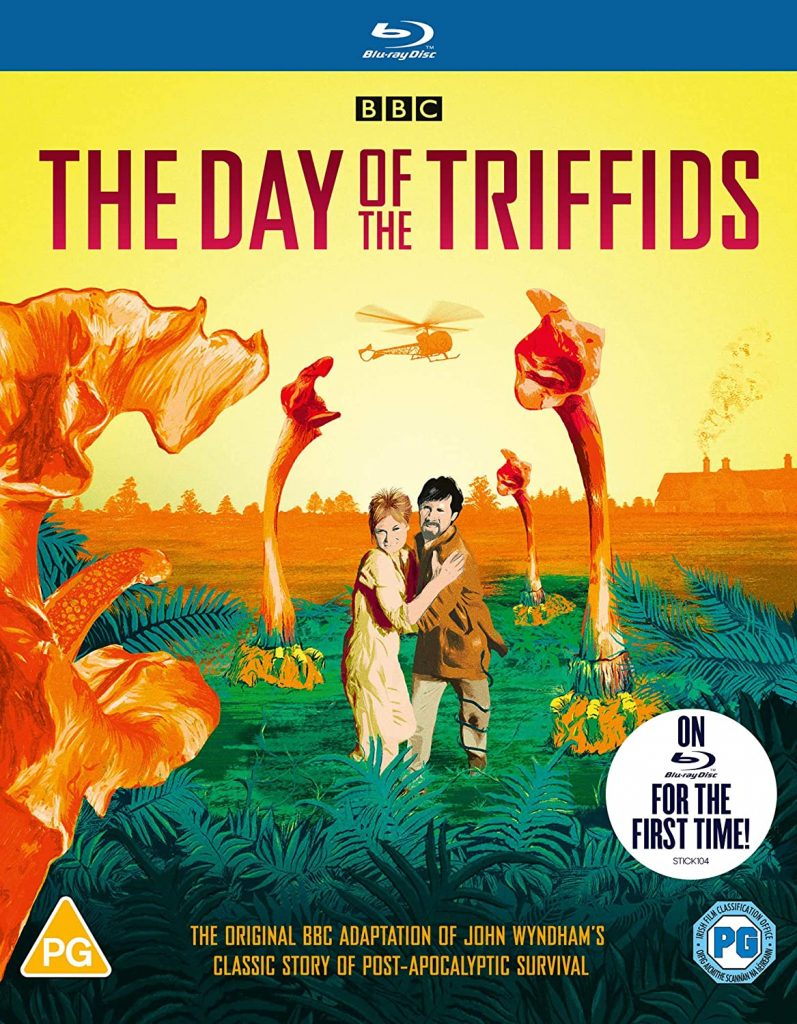
As if life is not feeling catastrophic enough at the moment, the BBC has just released their bleak and, at times, unnerving 1981 adaptation of John Wyndham’s The Day of The Triffids, a beloved post-apocalyptic yarn that has captured the imagination of creators including author Margaret Atwood and Alex Garland, who credits the book as inspiring his script for 28 Days Later.
The new Blu-ray is the first time the BBC’s 1980s’ adaptation has been released in High Definition and the disc includes a short feature on the restoration process. It’s complemented by an informative and satisfyingly detailed booklet dedicated to the memory of the drama’s director Ken Hannam (1929 – 2004) and producer David Maloney (1933-2006). TV historian Andrew Pixley lays out The Day of the Triffids production history, explains the creation of the prop triffids and gives examples of the adaptation’s critical reception.
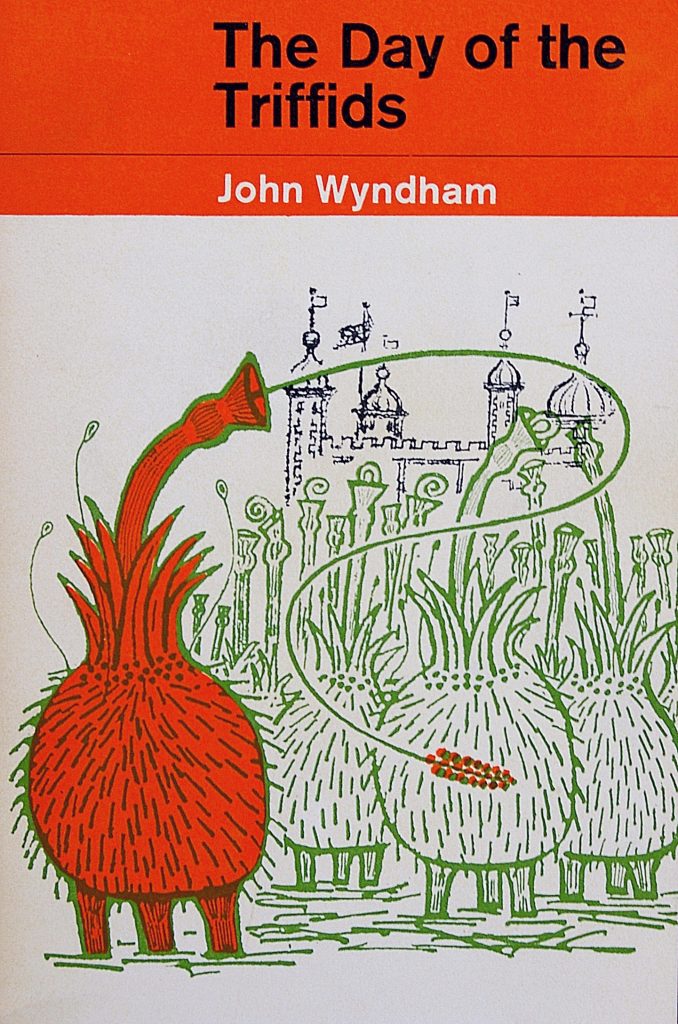
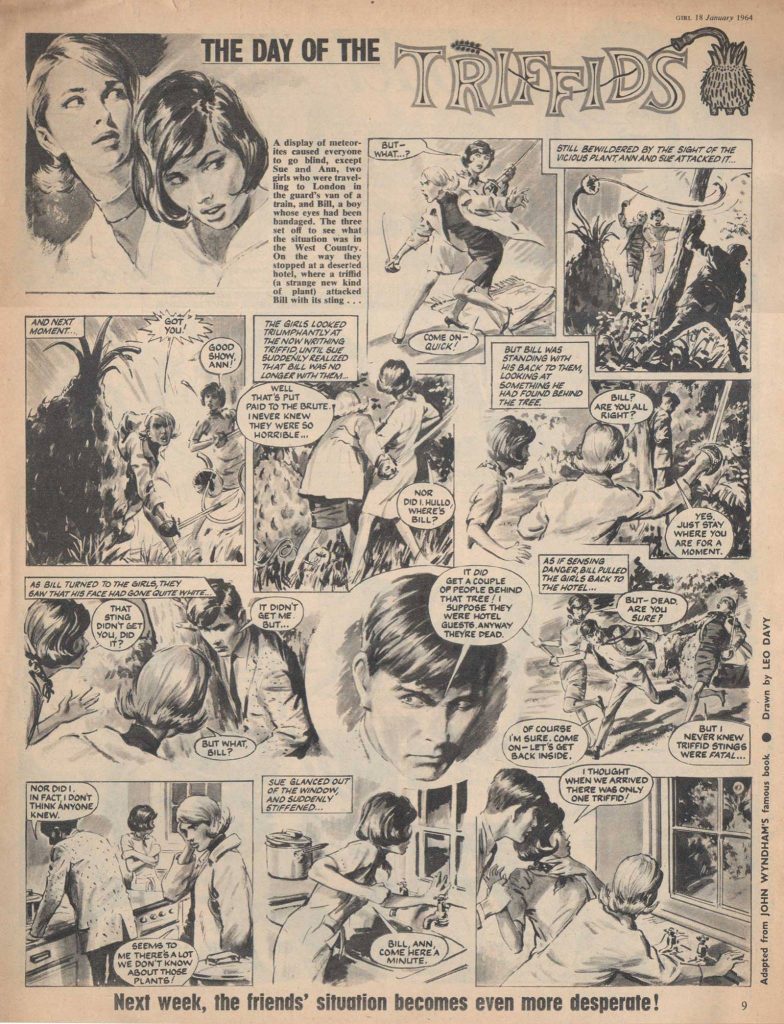
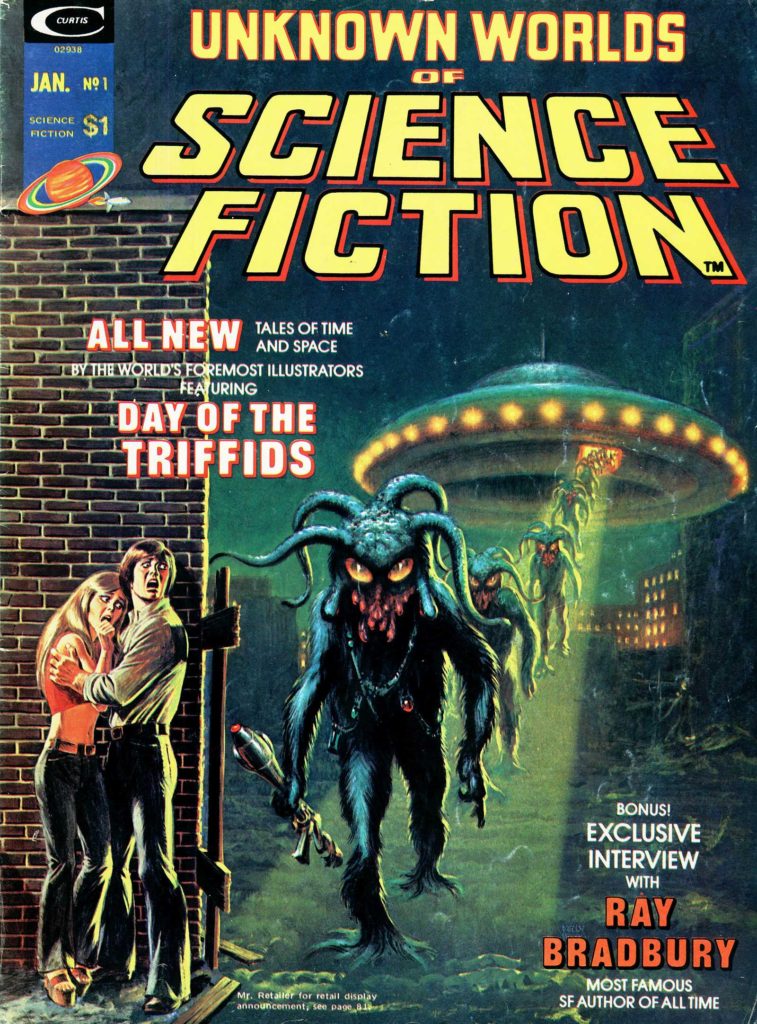
The Day of the Triffids has been adapted for radio, audio book, film, television and comics leading Arthur C. Clarke to call it an “immortal” story. Comic book adaptations include reworking the story as a short-lived schoolgirl adventure for the British comic Girl, and a more lurid adaptation in the first issue of the Marvel magazine Unknown Worlds of Science Fiction, notable for its misleading cover which suggested that the troublesome triffids were Bug Eyed Monsters from out of space (a version of the novel for the American market suggested that the plants come from Venus).
The BBC has adapted the novel twice for television, in 1981 and 2009. It’s this 1981 production, screened over six half hour episodes in the UK, that attracted an average of eight million viewers and is widely regarded as the definitive screen adaptation of Wyndham’s novel.
For those unfamiliar with the story, The Day of the Triffids sees mankind’s superiority over nature suddenly up-ended when a passing comet causes all who look upon it to lose their sight. The situation is made worse by the existence of “triffids”, a form of plant life, created and cultivated for its oil.
However, these benefits come with stings attached. The triffids can use their three, large roots to move and seem to possess intelligence. Worse, each bloom contains a poisonous, whip-like sting capable of targeting the exposed flesh, particularly the hands and eyes of its human prey. The triffids are carnivorous and, once they have killed their prey, they wait for the flesh to decay until it is ready to eat.
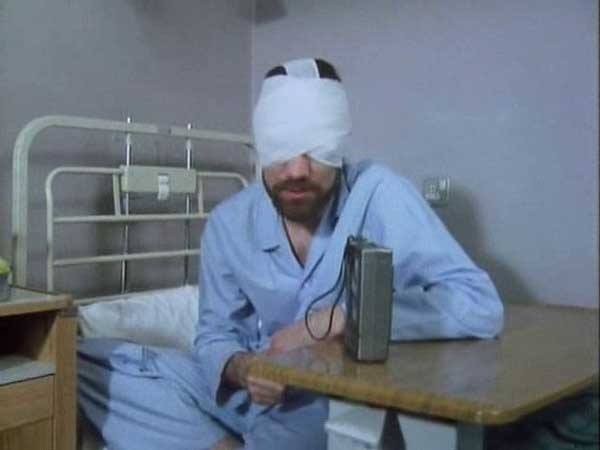
The Day of the Triffids is narrated by triffid farmer Bill Masen (played by John Duttine), who has missed the comet’s display and its debilitating effects because, ironically, he has been temporarily blinded by a triffid sting. The 1981 adaptation has Masen talking into a reassuringly clunky tape recorder, with the early chapters of the book being told in flashback. In episode one, we get to see Mason being stung by a triffid as a child and his subsequent work harvesting the plants for their oil.
First published in 1951, The Day of the Triffids drew on John Wyndham’s personal experiences in World War Two, including the sense of quiet desolation that would fall on London’s streets after German bombing raids. His idea for the aggressive triffid plants came from a drive through a storm in which his car was thrashed by tree branches.
The works of HG Wells were also inspirations for Wyndham’s own writing; Wyndham explicitly compares the situation in his book with Wells’s short story, “The Country of the Blind“. Wyndham suggests that Wells’ account of humans who, by force of circumstance, have successfully adapted to being blind is overly optimistic.
The novel has sharply divided critics. SF author Brian Aldiss’ description of it as a “cosy catastrophe” has stuck, particularly among supporters of Science Fiction’s 1960’s New Wave. More recently, Margaret Atwood (a noted fan of some of Wyndham’s work) has hit back, writing “one might as well call World War Two – of which Wyndham was a veteran — a ‘cosy’ war because not everyone died in it.”
John Clute, an editor and contributor to The Encyclopaedia of Science Fiction noted that the novel was “safe” enough to be included in school syllabi. By extension, it can be argued that the story was also deemed safe enough to be adapted and screened for the BBC’s prime time schedule and its elderly, cultural conservative audience. The BBC’s research suggested that audiences found their adaptation to be suspenseful, rather than scary.

Like the book, the TV serial, follows Masen through a nightmarish London in which the sighted are press ganged into searching for food and women’s lives are valued only for procreation and men’s sexual pleasure. Along the way, Masen rescues a young woman, Josella “Jo” Playton (Emma Relph) from captivity and the pair set out to find a life free from triffids and tyranny. They are helped and hindered by a teacher, Jack Coker, who refuses to leave London’s blinded population to starve or to the mercy of the triffids. On screen, Coker is played by Maurice Colbourne who steals the show as Wyndham’s thinking man’s man of action.

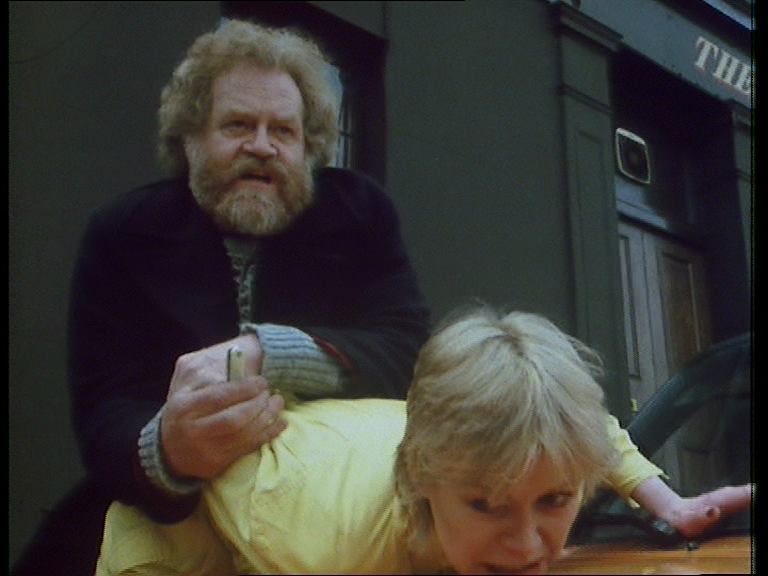
One of the 1981 BBC adaptation’s pleasures is spotting familiar actors in confident form, including Stephen Yardley, John Hollis and David Swift who command the screen for one or more episodes. All those cast members who encounter the triffids react to the sight of perambulatory pitcher plants waddling up suburban drives, down city streets or across hedge row Britain, with enough conviction to keep you gripped to the end.
The adaptation strikes a balance between scenes of action and character pieces. Individual episodes become something of a chamber piece, although this is offset by some particularly disturbing vignettes showing, for example, blinded hospital patients groping around at the bottom of a flight of stairs, a young mother glimpsed surrounded by triffids, and blind people surrounding a car, their groping hands pressing at the vehicle in search of a way in as Masen and Jo cower inside.
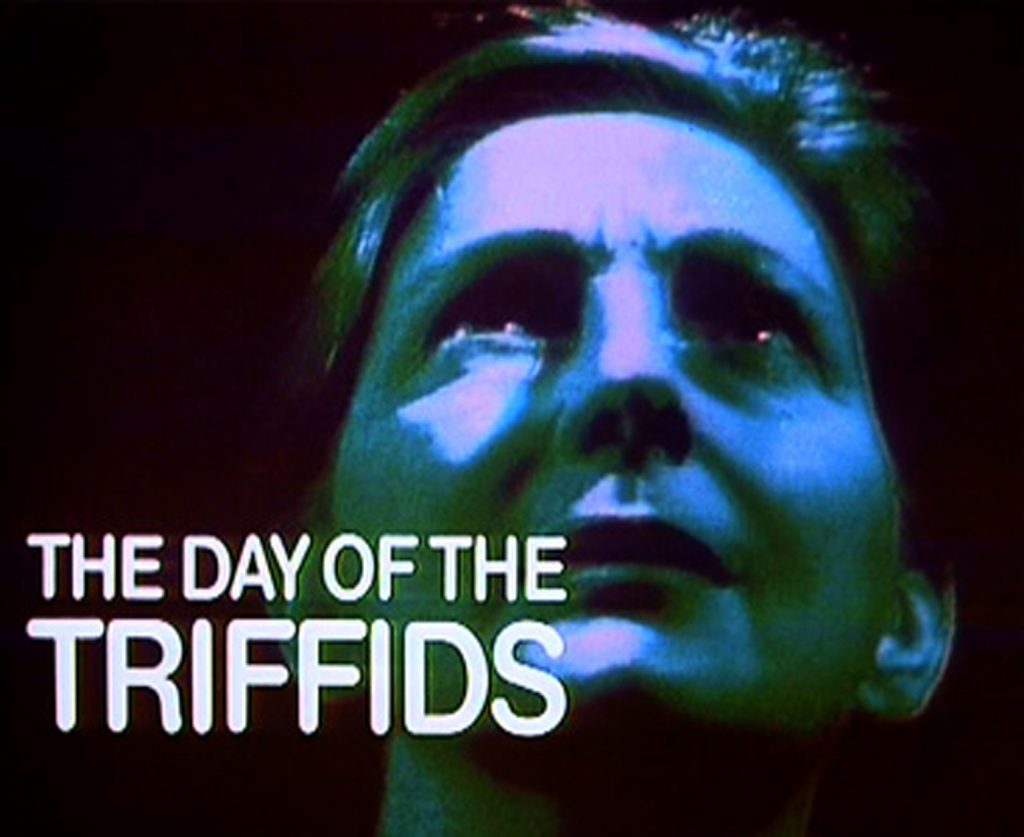
The success of adapting The Day of the Triffids to the screen falls on how well the triffids are realised. For this production, eight full size triffid props were designed and built by Steve Drewitt. Hannam shoots the plants from low angles, signalling their menacing presence with the distinctive shwoosh of their stingers and the hollow rapping of woody stumps by which the triffids communicate with each other. The music, a mix of xylophone, discordant piano notes and choral voices, adds to the unsettling air of menace.
The triffids’ design is also creepily sexualised, with different parts blatantly resembling male or female genitalia or even a mixture of both. In the book he triffids are a result of a hybridisation that makes them well adapted as our competitors in the post-comet world. Interestingly Wyndham’s human characters, at least the ones who seem destined to survive best, are also hybrids of sorts.
In the book, Masen defies his father’s imagining of occupational and class divisions by becoming a triffid producer – work that combines intelligence with physical labour. The character of Jo Playton challenges the duality of gender norms, writing a book provocatively title Sex is My Adventure (an element dropped from the TV script). And Coker explicitly characterises himself as a “hybrid”. As the triffid plants combine previous botanical forms, so the protagonists combine previous social divisions in new and unpredictable ways.
There is some controversy around the new Blu-ray release. The original production was the BBC’s usual mix of exterior location filming and interior studio recording. The latter is less amenable to up-scaling and differences between the two media are noticeable including a few instances of motion blur. The filmed sequences now give the cast a rather pink complexion.
There have also been complaints about the title sequence which has been re-mastered from 35mm. The sequence takes its cue from the book, specifically a nurse’s description of the comet, “The sky’s full of shooting stars…All bright and green they make people’s faces look frightfully ghastly”. I must admit that the sequence (blending together the spectacular night time display of falling stars, people looking skyward and a triffid stinging a victim) is as disturbing as I remember.
Watching the 1981 production for the first time since the 1980s, I was hooked by the story and untroubled by the restoration process (some have returned their Blu-ray unopened). The serial harks back to a time when reliable character actors could sell an audience on anything whether it be a soap opera, classic serial or even the occasional bonkers science fiction story.
Make no mistake, The Day of the Triffids is top tier 1980’s BBC drama and a welcome, classy companion in any socially distancing household.
Tim Robins
• The Day of the Triffids is available now on Blu-Ray (AmazonUK Affiliate Link)
DOWNTHETUBES FOR FURTHER READING…
• Margaret Atwood on Chocky and other John Wyndham stories
• The Prop Gallery – Behind the Scenes feature on creating the Triffids
• The Day of the Triffids – Sussex Film Location Information
• The Day of the Triffids – Radio Time feature – September 1981 – via Graeme Wood
• Hidden Wyndham: Life, Love, Letters by Amy Binns (AmazonUK Affiliate Link)
• Listen to the BBC 1957 radio drama adaptation of The Day of the Triffids
A freelance journalist and Doctor Who fanzine editor since 1978, Tim Robins has written on comics, films, books and TV programmes for a wide range of publications including Starburst, Interzone, Primetime and TV Guide.
His brief flirtation with comics includes ghost inking a 2000AD strip and co-writing a Doctor Who strip with Mike Collins. Since 1990 he worked at the University of Glamorgan where he was a Senior Lecturer in Cultural and Media Studies and the social sciences. Academically, he has published on the animation industry in Wales and approaches to social memory. He claims to be a card carrying member of the Politically Correct, a secret cadre bent on ruling the entire world and all human thought.
Categories: Digital Media, downthetubes News, Features, Other Worlds, Reviews
 In Review: Doctor Who – The Legend of Ruby Sunday/ The Empire of Death
In Review: Doctor Who – The Legend of Ruby Sunday/ The Empire of Death  In Review: Skibidi Toilet
In Review: Skibidi Toilet  A British Science Fiction Catch Up with Philip Harbottle: Tales of Wonder, Golden Amazon and much more
A British Science Fiction Catch Up with Philip Harbottle: Tales of Wonder, Golden Amazon and much more  In Review: Comic Creatives UK Anthology Spring 2023
In Review: Comic Creatives UK Anthology Spring 2023
I recall listening to the BBC radio serial – perhaps the first adaptation of the book – broadcast in 1957, when I was sixteen, and a fan of Journey into Space! Science fiction often mingled with science fact; the real life advances in aircraft in the 1950s were mirrored by the fiction of the day. I still hear in my mind the sound effect used for the whip of the triffids as they flicked their heads back and forth.
As for “The 1981 adaptation has Masen talking into a reassuringly clunky tape recorder, with the early chapters of the book being told in flashback” – I expect the “reassuringly clunky tape recorder” was ubiquitous in films and in TV fiction in the 1950s – the Grundig TK5. I had one myself! Have a look at 1950s and 1960s films on Talking Pictures TV – and you’ll occasionally see a TK5 as a prop; sometimes used correctly.
There was an earlier radio production, readings of the book broadcast by the BBC in 1953, but the 1957 version was the first adaptation and it’s available to listen to here on ERBZine, and a guide to the adaptation here.